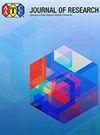化学足迹法对中国纺织工业氮氧化物和二氧化硫排放的毒性影响评价
IF 1.2
4区 工程技术
Q4 MATERIALS SCIENCE, TEXTILES
引用次数: 0
摘要
空气污染物的排放对人类健康和环境造成不利影响。氮氧化物和二氧化硫是典型的空气污染物,会引起酸雨和颗粒物(PM)。在生产阶段,氮氧化物和二氧化硫的大量排放使纺织工业面临巨大的挑战。确定化学足迹是将污染物排放的潜在环境风险转化为直观的毒性形式的有效方法。在本研究中,我们采用化学足迹法来评估中国纺织工业排放的氮氧化物和二氧化硫的毒性影响。结果表明:2001 - 2019年,中国纺织工业氮氧化物和二氧化硫的化学足迹呈显著下降趋势,其中氮氧化物的化学足迹约为二氧化硫的11倍;在中国纺织工业的三个子行业中,纺织制造业的化学足迹最高,占总化学足迹的57.1-65.7%。剩余的化学足迹分配给化学纤维制造部门,以及纺织服装,鞋类和帽子制造部门。2006 - 2015年,中国纺织工业的化学足迹强度也呈下降趋势,三个子行业的化学足迹强度依次为化纤制造业、纺织制造业、纺织服装鞋帽制造业。本文章由计算机程序翻译,如有差异,请以英文原文为准。
Toxicity Impact Assessment of Nitrogen Oxide and Sulfur Dioxide Emissions in China’s Textile Industry With Chemical Footprint Method
Emissions of air pollutants cause adverse impacts on human health and the environment. As typical air pollutants, nitrogen oxide and sulfur dioxide cause acid rain and particulate matter (PM). Significant emissions of nitrogen oxide and sulfur dioxide in the production phases make the textile industry face tremendous challenges. Determining the chemical footprint is an effective method for transforming the potential environmental risks of pollutant emissions into an intuitive form of toxicity. In this study, we adopted the chemical footprint method to assess the toxicity impact of nitrogen oxide and sulfur dioxide emissions from China’s textile industry. The results indicate that the chemical footprint of nitrogen oxide and sulfur dioxide in China’s textile industry showed a significant decreasing trend from 2001 to 2019, and the chemical footprint of nitrogen oxide was about 11 times higher than that of sulfur dioxide. Among the three sub-sectors of China’s textile industry, the textile manufacturing sector had the highest chemical footprint, accounting for 57.1–65.7% of the total chemical footprint. The remaining chemical footprint is allocated to the chemical fibers manufacturing sector, and the textile wearing apparel, footwear, and cap manufacturing sector. The chemical footprint intensity of China’s textile industry also showed a decreasing trend from 2006 to 2015, and the chemical footprint intensity of the three sub-sectors was in the order of the chemical fibers manufacturing sector, the textile manufacturing sector, and the textile wearing apparel, footwear, and cap manufacturing sector.
求助全文
通过发布文献求助,成功后即可免费获取论文全文。
去求助
来源期刊

AATCC Journal of Research
MATERIALS SCIENCE, TEXTILES-
CiteScore
1.30
自引率
0.00%
发文量
34
期刊介绍:
AATCC Journal of Research. This textile research journal has a broad scope: from advanced materials, fibers, and textile and polymer chemistry, to color science, apparel design, and sustainability.
Now indexed by Science Citation Index Extended (SCIE) and discoverable in the Clarivate Analytics Web of Science Core Collection! The Journal’s impact factor is available in Journal Citation Reports.
 求助内容:
求助内容: 应助结果提醒方式:
应助结果提醒方式:


